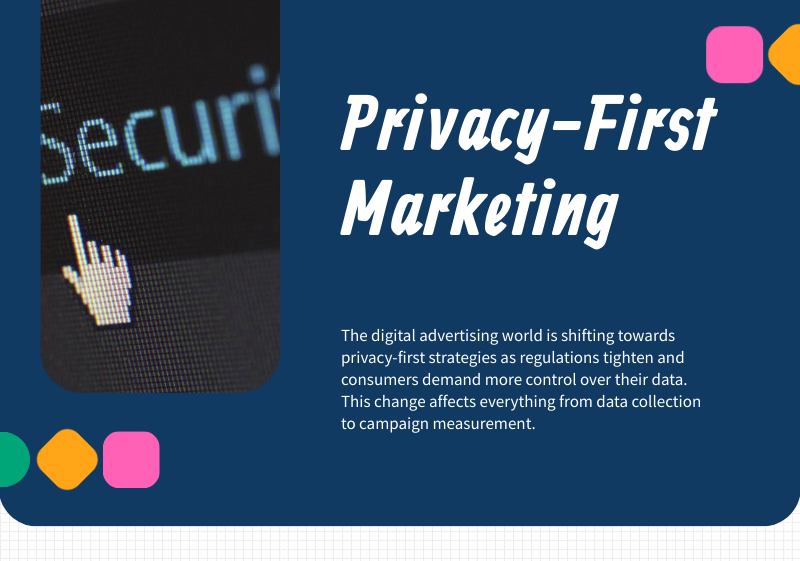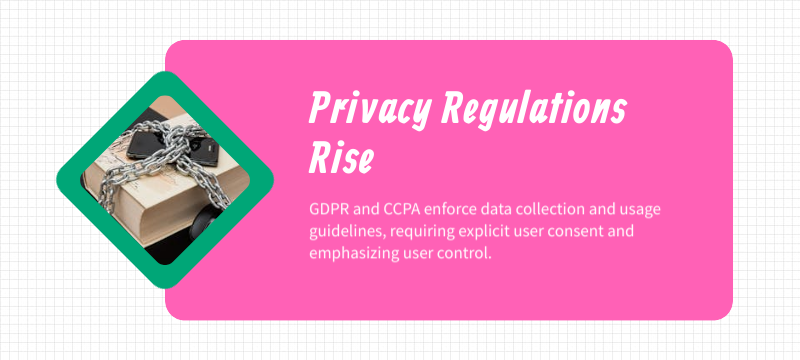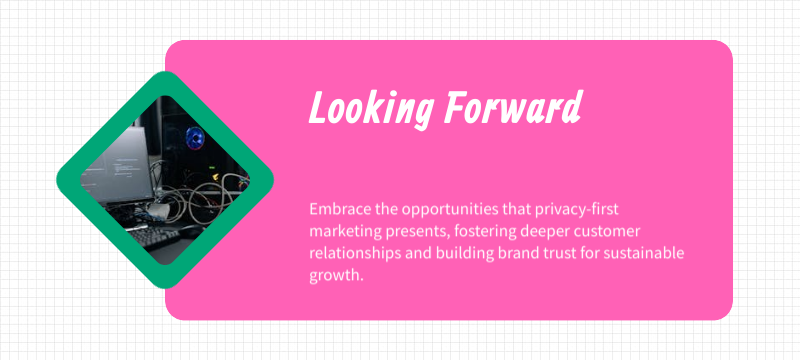What once thrived on third-party cookies and opaque data practices is now navigating a future dictated by consumer consent, transparency, and privacy-first strategies. With the deprecation of third-party cookies, the rise of stringent privacy regulations like the GDPR and CCPA, and changing consumer expectations, advertisers must rethink how they collect, use, and respect user data.
This evolution doesn’t just affect compliance—it reshapes campaign performance, measurement, personalization, and trust. The transition from cookies to consent is not just a technical update; it’s a shift in the philosophy of digital marketing.
The Fall of Third-Party Cookies
What Are Third-Party Cookies?
Third-party cookies are tracking codes set by domains other than the one the user is visiting. They allow advertisers and tech platforms to monitor users across websites, building profiles for targeted advertising.
Why Are Cookies Being Phased Out?
Several factors contribute to the cookie’s downfall:
- Privacy concerns: Users increasingly demand control over their personal data.
- Browser restrictions: Safari (ITP), Firefox (ETP), and now Google Chrome have severely limited or are eliminating third-party cookies.
- Regulatory pressure: Laws like GDPR and CCPA require explicit user consent before tracking.
Impact on Advertising
Without cookies:
- Cross-site tracking becomes harder.
- Audience targeting is less accurate.
- Attribution models become incomplete.
- Retargeting strategies suffer.
The Rise of Privacy Regulations
GDPR and CCPA: Setting the Standard
- GDPR (General Data Protection Regulation) enforces strict guidelines for data collection and usage across the EU.
- CCPA (California Consumer Privacy Act) empowers users in California to know what data is collected and request deletion.
Both laws underscore the importance of explicit consent, data minimization, and user control.
Consent Management Platforms (CMPs)
CMPs have emerged as a necessity, enabling:
- Collection of informed, opt-in consent.
- Customization of consent based on regions and laws.
- Audit trails for regulatory compliance.
Global Momentum
Other regions are following suit:
- Brazil’s LGPD
- India’s Digital Personal Data Protection Act
- China’s PIPL
This signals a global trend: privacy-first digital marketing is the new norm.
First-Party Data: The New Gold Standard
What Is First-Party Data?
First-party data is information collected directly from your users—such as:
- Email signups
- Website behavior
- Purchase history
- CRM data
Benefits Over Third-Party Data
- More accurate and reliable
- Owned and controlled by the brand
- Aligned with privacy regulations
Strategies to Build First-Party Data
- Content marketing that incentivizes email subscriptions
- Loyalty programs that gather purchase behavior
- Interactive tools (quizzes, calculators) to capture preferences
- Progressive profiling through forms and surveys
Investing in first-party data supports not only compliance but also robust personalization.
Server-Side Tracking and Privacy-Safe Measurement
Server-Side Tagging
Instead of relying on browser-based tracking, server-side tagging shifts data collection to the server, offering:
- Better data control
- Improved load speeds
- Enhanced security
- Extended cookie lifespan in first-party contexts
Privacy-Safe Attribution
With cookies gone, advertisers need alternative attribution methods:
- Modeled conversions using machine learning
- Aggregated data instead of user-level tracking
- Conversion APIs (e.g., Meta’s CAPI, Google’s Enhanced Conversions)
These solutions help bridge the gap between data privacy and performance measurement.
Contextual Advertising: Making a Comeback
Without behavioral targeting, contextual advertising is regaining relevance. It focuses on placing ads based on page content, not user behavior.
Advantages of Contextual Targeting
- Privacy-safe by design
- No need for user tracking
- Highly relevant in intent-driven environments
Advanced contextual engines now use natural language processing (NLP) to ensure ads align with user mindset and page context.
Identity Solutions: The Post-Cookie ID Puzzle
Universal IDs and Clean Rooms
As cookies vanish, new identity solutions are emerging:
- Unified ID 2.0: An open-source framework using hashed emails
- Data clean rooms: Environments where brands and platforms match data in privacy-safe ways
These tools enable cohort-based targeting and analytics without exposing individual user data.
Google’s Privacy Sandbox
Google’s proposed alternatives to cookies include:
- Topics API: Assigns interest categories based on recent browsing
- FLEDGE: Facilitates retargeting without exposing personal data
Though still in testing, these APIs could redefine the mechanics of targeting in Chrome.
Transparency, Trust, and Ethical Marketing
Building Consumer Trust
Privacy changes are an opportunity to earn user trust by being:
- Transparent about data use
- Clear in consent requests
- Respectful of user choices
Ethical Data Practices
Ethical data usage means:
- Collecting only what’s necessary
- Being honest about usage
- Providing opt-outs without penalty
Consumers reward brands that value privacy with higher loyalty and engagement.
The Role of Creative in Privacy-First Campaigns
Without granular data, marketers must rely more on strong creative to drive performance. This includes:
- Clear value propositions
- Attention-grabbing visuals
- Messaging tailored to broader audience segments
Data helps optimize, but compelling creative opens the door.
Organizational Alignment and Cross-Department Collaboration
Privacy-first transformation isn’t just a marketing issue. It affects:
- Legal and compliance: Interpreting regulations
- IT and development: Implementing technical solutions
- Customer experience: Communicating clearly with users
Cross-functional collaboration ensures that privacy practices are seamless, scalable, and sustainable.
Privacy by Design: Embedding Compliance Into Your Framework
To fully embrace the shift from cookies to consent, brands must adopt a privacy-by-design approach. Rather than treating privacy as a reactive task—responding only when regulations demand—it needs to be proactively built into the DNA of your marketing and product strategies.
Privacy by Design emphasizes:
- Embedding privacy into system architecture at the earliest stages
- Making privacy a core consideration in product development
- Automating privacy compliance to minimize human error
- Empowering users with control over their data at every touchpoint
When organizations move privacy up to the planning phase, they avoid costly retrofits and build brand equity through a genuine commitment to protecting personal information.
Key Principles of Privacy by Design
The core tenets include:
- Proactive not Reactive: Anticipate and prevent privacy risks before they occur.
- Privacy as the Default Setting: User data is protected automatically without requiring intervention.
- End-to-End Security: Full lifecycle protection, from collection to deletion.
- Visibility and Transparency: Clear, accessible information about data practices.
By adopting these principles, companies create a strong foundation for sustainable marketing in a privacy-conscious world.
Building a Consent Culture Internally
True compliance requires more than legal documents or checkbox forms—it demands a cultural shift across your organization. Building a consent culture means every team member, from marketing interns to C-suite executives, understands:
- What consent really means: Freely given, informed, specific, and unambiguous.
- Why consent matters: It’s not just about avoiding fines; it’s about respecting customer autonomy.
- How to operationalize consent: From email marketing practices to product features.
Organizations must train teams not just to “get the opt-in” but to earn and honor user trust. This mindset improves customer satisfaction, brand perception, and long-term loyalty.
Strategic Use of Zero-Party Data
Beyond first-party data, brands should prioritize collecting zero-party data: information that customers intentionally and proactively share, such as preferences, interests, and desired experiences.
Unlike inferred data, zero-party data is explicitly given, making it incredibly valuable and privacy-compliant.
Ways to collect zero-party data:
- Surveys and quizzes
- Preference centers
- Product finders and recommendation engines
- Loyalty and rewards programs
Since users willingly provide zero-party data, it typically leads to higher engagement and better personalization outcomes without overstepping privacy boundaries.
How Martech Stacks Are Evolving
The privacy revolution is also reshaping the marketing technology (martech) landscape. Tools and platforms that once prioritized data aggregation and cross-site tracking are now emphasizing:
- Consent management
- First-party data onboarding
- Customer data platforms (CDPs)
- Privacy-enhancing technologies (PETs)
Forward-thinking brands are investing in:
- Data clean rooms to collaborate safely with partners
- Server-side analytics to minimize data leakage
- Federated learning to train algorithms on decentralized data
Choosing the right tech stack now isn’t just about power—it’s about ensuring that power is wielded ethically and compliantly.
Publisher and Platform Adaptations
The major digital advertising platforms have not stood still. Publishers and ad tech companies are redesigning their models to align with the new privacy expectations.
What’s changing?
- Walled gardens are getting stronger: Platforms like Google, Meta, and Amazon leverage their logged-in audiences for targeting.
- Authenticated traffic is prioritized: Publishers encourage users to create accounts or subscribe, turning anonymous traffic into identifiable first-party data.
- Direct deals and private marketplaces rise: Brands increasingly prefer direct publisher relationships over open exchanges.
For advertisers, this means adapting media buying strategies to emphasize quality partnerships, context, and authenticated users over pure reach.
Measuring Success Without Personal Identifiers
Traditional measurement models relied heavily on third-party cookies and deterministic identifiers. In the new landscape, brands need to shift toward:
- Incrementality testing: Running controlled experiments to measure true lift.
- Modeled attribution: Using probabilistic models rather than user-level tracking.
- Aggregated reporting: Analyzing trends and segments, not individuals.
Although these methods may seem less precise at first glance, they often yield more sustainable and privacy-friendly insights over time.
Focusing on business outcomes—like sales lift or brand sentiment—rather than user journeys alone creates healthier KPIs in a consent-based environment.
The Creative Opportunity: Winning Hearts Over Cookies
Privacy restrictions, surprisingly, put creativity back at the center of marketing. When you can’t rely on hyper-targeting to get in front of the right person at the right time, your creative needs to:
- Capture attention immediately
- Connect emotionally with broader audiences
- Convey a compelling value exchange
Great storytelling, visual excellence, and human-centered messaging become key competitive advantages. Brands investing in content marketing, brand building, and emotional intelligence will outperform those still clinging to precision targeting alone.
Privacy challenges force us to become better marketers—not just better data managers.
Snapshots: Brands That Pivoted Successfully
Sephora: Loyalty-Driven First-Party Data
Sephora reoriented its digital strategy around its loyalty program, encouraging customers to share preferences and beauty goals voluntarily. As a result, it created a robust zero-party data ecosystem that fuels hyper-personalized experiences without infringing on privacy.
The New York Times: Subscription Over Ad Revenue
Facing ad revenue challenges due to privacy changes, The New York Times doubled down on subscription models. By prioritizing user value and quality content over aggressive tracking, it built a more durable and profitable digital business.
Patagonia: Transparency as a Brand Value
Patagonia embraces transparency not just in data practices but across all brand messaging. This ethos earns trust, loyalty, and advocacy among its customers—demonstrating that ethical marketing is also good business.
Preparing for the Next Wave of Regulation
Even as brands adjust to GDPR, CCPA, and similar laws, more regulations are on the horizon:
- ADPPA (American Data Privacy Protection Act) in the U.S.
- Digital Services Act (DSA) and Digital Markets Act (DMA) in the EU
- State-level privacy laws across the U.S.
Rather than scrambling each time a new regulation appears, businesses must build adaptable systems that can evolve alongside the law.
Future-proofing strategies include:
- Data minimization by default
- Consent as a central operating principle
- Modular consent flows that can adapt regionally
- Continuous privacy impact assessments
Adopting a proactive rather than reactive posture turns regulatory risk into a strategic advantage.
Education and Continuous Adaptation
Training Your Team
Teams must stay updated on:
- Changing laws
- New tools and APIs
- Data governance best practices
Internal training and industry events help maintain compliance and innovation.
Testing and Experimentation
The end of cookies isn’t the end of performance. It’s an invitation to:
- Test new targeting tactics
- Experiment with consent flows
- Innovate in data collection
Companies that iterate fast will thrive.
Looking Forward
Short-Term Challenges
- Decreasing match rates for remarketing
- Increased reliance on walled gardens
- Performance gaps from data loss
Long-Term Opportunities
- Deeper customer relationships
- More durable data strategies
- Increased brand trust
Adapting now sets brands up for sustainable growth in a privacy-centric world.
Privacy-First Is Performance-First
The transition from cookies to consent is not a setback—it’s an evolution. While change brings friction, it also brings the chance to redefine what good marketing looks like. Privacy-first advertising is more than compliance; it’s a strategic imperative that aligns brand values with customer expectations.
Brands that adapt will earn loyalty, build more durable data, and unlock performance through trust.









